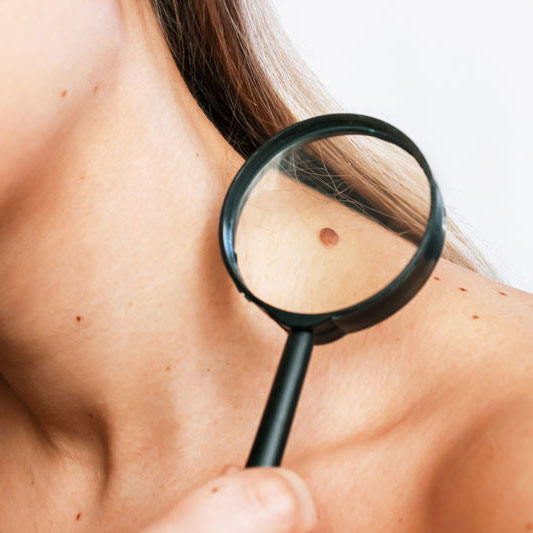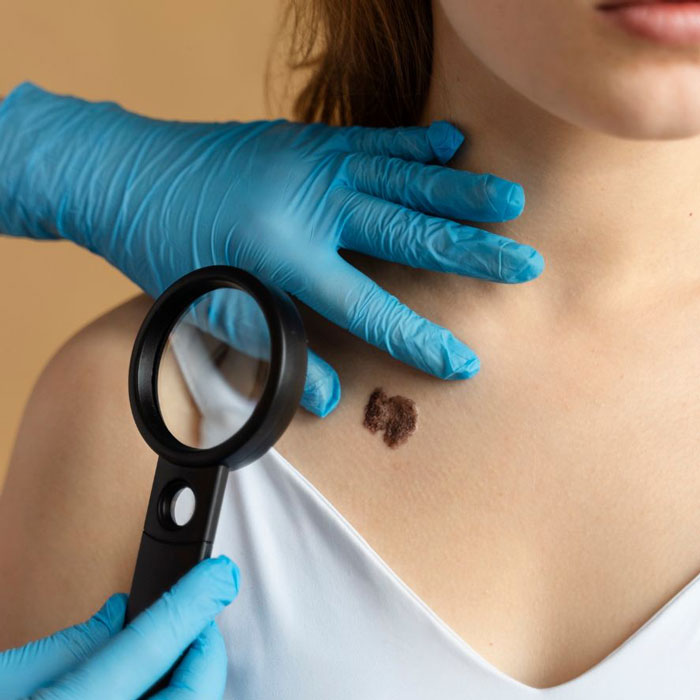7 Jabotinsky st. Moshe Aviv tower, 19th floor. Ramat-Gan
7 Jabotinsky st. Moshe Aviv tower, 19th floor. Ramat-Gan
Total-skin examination, also known as moles examination, is a procedure where a dermatologist carefully examines the patient’s entire skin, diagnosing all existing lesions, including moles.
The examination is conducted with the patient wearing only underwear or without clothes, and it involves a visual inspection with the naked eye, magnifying glass, and dermoscopic evaluation of all lesions, specifically focusing on moles. The purpose of the examination is to identify suspicious skin lesions that require further investigation and treatment, as early-stage skin cancers can resemble benign moles. Importantly, the examination is painless and devoid of side effects.


The examination is recommended for individuals with risk factors for skin cancer, such as those with fair skin, eyes, and hair, a personal or family history of skin cancer, a history of excessive sun exposure, and more. The Israeli Ministry of Health recommends a mole examination for all patients with 20 moles or more.
The frequency of the examination depends on various factors, including the patient’s risk level, the complexity of the examination, the number of suspicious lesions, and the availability of the examiner. Most doctors suggest undergoing the examination every six months to once a year.
Total-skin examination can be performed as a standalone test or as part of digital mole mapping (total-body photography).

If you have located a suspicious lesion on the skin, especially if it is unusual, new or recently changed, contact a dermatologist as soon as possible in order to diagnose the lesion and decide on further treatment.
Give us a call or fill in your details and we will get back to you